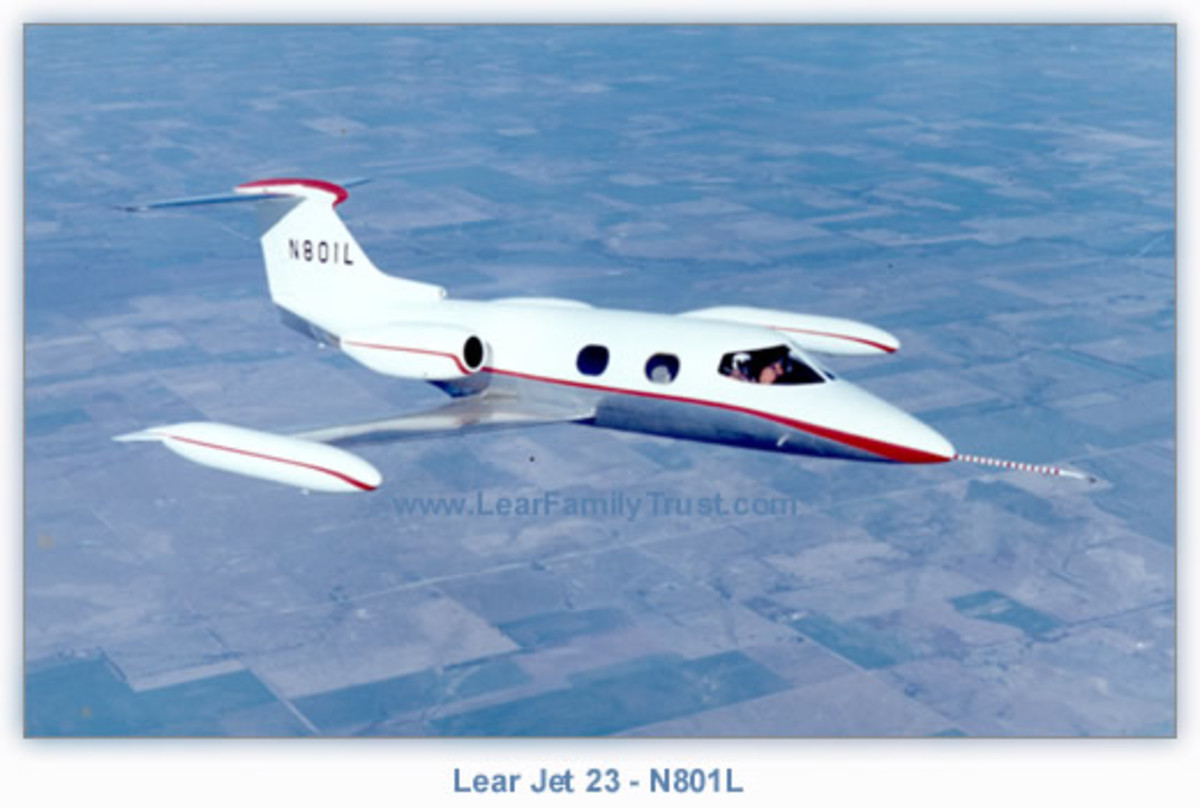Very Light Jets

The latest and Greatest for Millions Less!
When it comes to style, speed, sophistication, not to mention a means of showing off material wealth in a way that catches the eye and the interest of friends, associates, and even total strangers, what truly makes a man (or a woman) stand out from the rest of the crowd? Is it the sleek, composite-body car that can go from zero to sixty before you can blink? Is it the gigantic house that requires an entire team of maids and butlers to properly maintain? Maybe that nifty new cell-phone with more features than your home computer, or perhaps those snazzy clothes that make the official wardrobe of the President of the United States, much less the CEO of any highly successful global corporation, look both tacky and laughingly retro? No, when it comes right down to the true essence of what makes an affluent man or a woman really stand out, nothing says wealth like owning your own private jet.
Now I'm sure that one probably got a laugh or two. Anybody who's ever looked at the price tag on a business jet like those in the ever popular Cessna Citation series can tell you that you'd practically have to win the state lottery and spend every cent of it on the aircraft itself (especially once the cost of registration, certification, flight training -if you haven't got your pilot's license-, fuel, and maintenance costs are figured into the equation.) It's this glaring fact that really makes the joke "and these are the keys to my private jet" seem kind of far fetched, at best, unless it's coming from someone like Donald Trump or John Travolta. And then, of course, like all machines, such a jet is going to wear out eventually, and begin to look steadily less appealing than the newer, faster, and more sophisticated business jets popping into the market- suddenly, you just might find your Lear Jet or your Dassault Falcon isn't as impressive as what some hotshot new guy's buzzing the airport with, that those gauges and meters in your corporate jet aren't as nifty or precise as the displays and integration systems being installed in the newest, hottest aircraft, like the Eclipse 500 and the Cessna Citation Mustang. Suddenly, you might find yourself thinking of a hundred more uses for that twenty or thirty million you dropped on your jet, especially once that hotshot happens to mention (in passing of course,) that his new jet cost a fraction of that. Sound incredible? The two aforementioned aircraft, the Citation Mustang and the Eclipse 500, are currently priced at three million (for the mustang) and about half that for the Eclipse- prices unheard of for civilian jet aircraft, until now.
So, while that is a significantly lower price tag than some of the older, less advanced jet aircraft out there, I'm sure a fair number of people might simply brush it off with a simple "Well, that's still way out of my price range" and move on without sparing it a second thought. Luckily, this is where the exciting world of fractional ownership comes in, proving that now, even your business, whether it's interests are international or domestic, can realistically look into a sleek new corporate jet.
Knowing that business jets are expensive (especially when they were first created almost three decades ago,) the FAA (Federal Aviation Administration) established a whole set of regulations around purchasing an aircraft between any number of investors that is still used today- in fact, many companies actively encourage fractional ownership, as it means the sale of one more aircraft that might not be sold otherwise. Add to that a generous payment plan, and suddenly even private citizens and small-town aviators are starting to look up in interest. Considering the fact that this is technically an emerging technology, that these little jets are as yet still cutting edge, who knows where the prices will drop to once they hit their full swing.
But, aviation regulations and financial planning are not the focus of this hub- besides, the difference in price between these new business jets and the old mainstays has probably managed to get at least some of you curious, perhaps suspecting that some kind of hidden fee in maintenance or shoddy workmanship are the cause, but you'll find none of that here; these new business jets are a part of a new trend, something exciting and wonderful, a brand-new type of aircraft known now by the collective term of VLJ, or Very Light Jet. Initially, the concept of a jet as small and lightweight as the VLJ for civil aviation use seemed so revolutionary that skepticism was high in the early stages of development and it wasn't until the basic design was proven that a handful of companies jumped on the bandwagon, seeing the potential for a fortune to be made, industry heavy-weight Cessna among them. Questions were also raised about demand; if a corporation had the cash to spend, why would they purchase a smaller jet, one capable of holding less baggage and fewer passengers overall, instead of an ordinary, full-sized business jet? Bigger is better, right? But, that's where the price tag came in- when faced with a half or three-quarters sized aircraft for a tenth or less of the cost, the choice is obvious.
But, perhaps the best part about the VLJ's has yet to be mentioned; since before World War II, the same basic design has been used for aircraft instruments in the cockpits of nearly every plane in the sky; oh sure, there are more types of instruments now, and many jets are outfitted with "glass cockpits" (essentially computer screens that can be programmed to display specific pertinent information) but nothing yet produced is as revolutionary as the systems that are going into the VLJ's. The big word today is integration- with systems like Eclipse Aviation's Avio on board, this new breed of jet can all but fly itself, and more.
- Mustang Home
Homepage for the Cessna Citation Mustang - Eclipse Aviation - Eclipse 500
Eclipse Aviation's Eclipse 500
Imagine: midflight, the jet develops a problem, something that if left unchecked could prove to be serious (like icing, for example); the computer is not only capable of detecting, troubleshooting, and automatically rectifying the problem instantaneously, no matter how minuscule or major it may be, but actually keeps a complete log of how everything on board has operated in between inspections which is then sent off to the main office and analyzed by engineers committed to making civil aviation safer not just for pilots, but also passengers and, inevitably, people on the ground as well. Add to that the ability to track and avoid weather systems, dangerous terrain, and even other aircraft in a way virtually unheard of in civil aviation before, and you've got a corporate bird that's worth every penny spent and is, to say the least, a far cry from the basic steam gauges and cable-operated propeller-driven planes (disturbingly) still used in training operations today.
So what are the drawbacks? Some might say size, perhaps speed- while these little jets are fast, capable of cruising at speeds up to 375 knots, they still aren't as fast as say, a commercial airliner, and the FAA believes that a sudden influx of slower jet aircraft could potentially clog up the airways, especially if VLJ's become as widespread as it looks like they're going to. The thought is that these slower aircraft would cause more delays and ultimately more unsafe skies for airlines and air taxi services, but, considering the fact that aircraft of all sizes and speeds have been sharing the same airports since humans first took flight with a minimum of problems, it is the opinion of this writer that these claims are merely a form of saber-rattling on the part of airlines afraid of losing business to smaller, cheaper, more fuel efficient jet aircraft piloted by entrepreneurs who are already planning operations for a new type of air taxi service- A VLJ air taxi service.
Beyond that, some have raised concerns about the reliance these new aircraft have on computer technology instead of simpler, tried and true equipment; fortunately, any fears about the failure of a VLJ's electronics in flight are all but unfounded- the backup systems (and subsequent backup systems thereof) installed on these aircraft make the chance of a failure roughly equal to that of winning the state lottery, or perhaps getting struck by lightning several times over.
So while the fifties may have promised us an affordable flying car in the garage of every family and jet packs for the daily commute, VLJ's still manage to put the dream of flight, or more specifically, the smooth and sophisticated feel of flying a sleek, lithe jet aircraft, within the reach of more individuals than ever before, and all without sacrificing important things like quality or safety. So who knows, perhaps in another few decades, the dreams of the fifties might just become a reality in one form or another- VLJ's are just a step in the process, paving the way to bring better, more efficient jets into civilian aviation in a way that has never been seen before.









